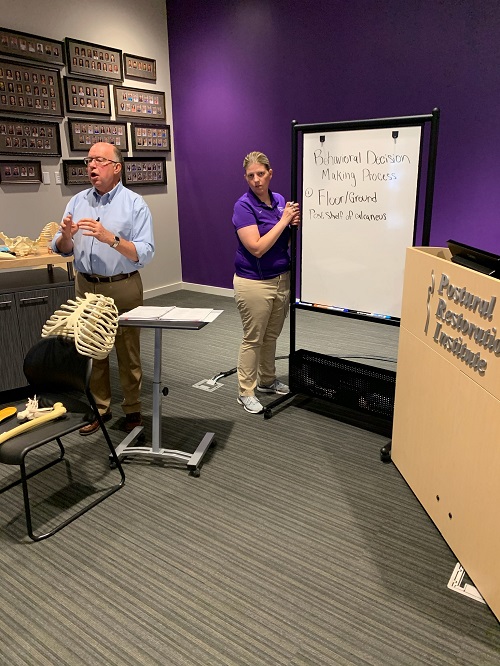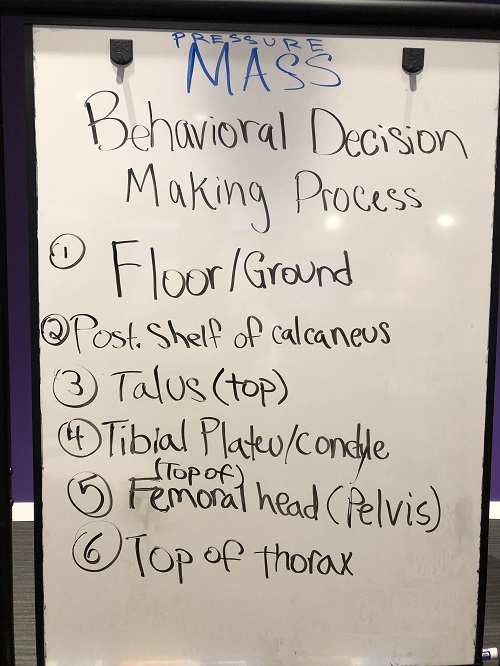Writing up a summary of an overview of a course that covers the most prominent patterns of impingement, instability, interference, and influence related to cortical and functional dominance is difficult to do, especially when my mind wants to elaborate on all the material that relates to only four anatomical regional tabs in the course manual. This course is fun to teach. That is about as short of a summary I can make. This course is an overview of ‘my’ cortical function as it relates to biased concepts (my concepts), on human biased compression and de-compression. Explaining the human’s brain cortical functional dominance integration, built off of the sense of the bottom of paired calcaneuses, taluses, tibias, acetabulums, and fossae of scapulas is a gift, and an enjoyable challenge for me, after looking at this ‘traditional’ way of thinking for over four decades. This is a novel way of approaching the way we use our mass on the floor/ground, posterior shelf of the calcaneus, top of the talus, top of the tibial condyle’s plateau, top of femoral head, and top of the ribs of the thorax for sense of pressure.



That’s why this summary is so short; “It is fun to teach!”


